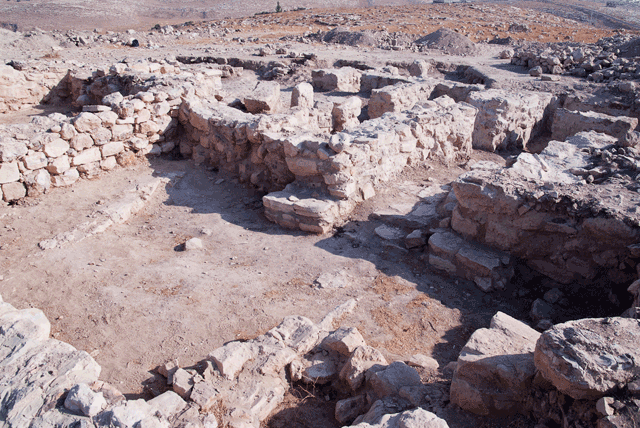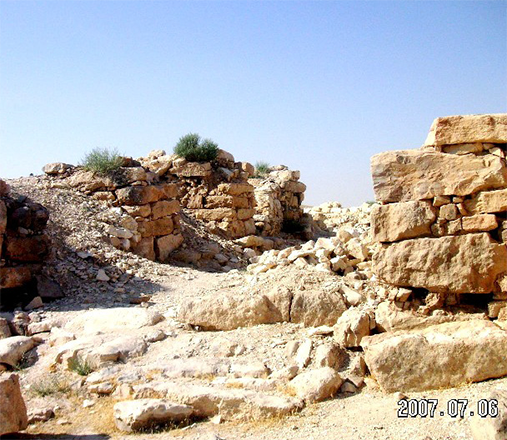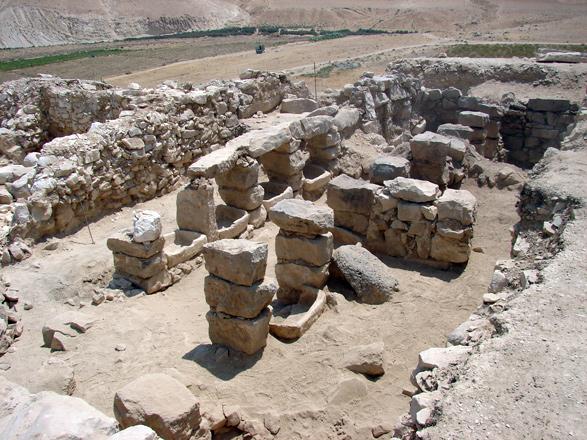You are here
‘No parallel in region’ for central Jordan Iron Age site — Canadian archaeologist
By Saeb Rawashdeh - Aug 07,2023 - Last updated at Aug 07,2023

Looking to the western entrance from the Hearth Room at Hirbet Atarus (Photo courtesy of Ataruz Project)
AMMAN — Hirbet Atarus is a small Iron Age site located in central Jordan, some 14km northwest from Dhiban and 4km east from Machaerus fortress.
The temple is now described as three parallel rooms that measure 353 sq.m. and fronting on a courtyard. “There is no parallel in the region” for a temple with such rooms, noted Canadian archaeologist, Professor Emerita Michele Daviau, from the Department of Archaeology and Classical Studies at Wilfrid Laurier University.
Research on the site has focused on a single rectangular room with a standing stone in one corner and a stone-built platform beside it, Daviau said.
Prior to the excavations, archaeologists found a ceramic figurine torso on the site’s surface which appears to represent a male figure with his hands at his sides, Daviau said.
“Some of the objects have been displayed at the Madaba Museum and they are cultic equipment,” Daviau said. The distinctive object is a square architectural model which depicts two males carrying animals and a partially preserved female attached to a fragment of the roof, she added.
Other finds include a large ceramic bull statuette, a lamp with a tall pedestal base, a kernos ring or magic vessel, a deep bowl or crater with animal reliefs around the rim, a cup-and-saucer vessel and a limestone platter with an incised lotus blossom design, she said.
“The presence of a large bull statuette suggests a very different tradition from one that was that practised at nearby Hirbet Al Mudayna,” Daviau noted.
Elsewhere in Jordan, archaeologists have found scattered religious artefacts, but no additional evidence of temple buildings, the professor noted.
Similar sites, including one in Dhiban, a town approximately 70 kilometres south of Amman, has only been tentatively identified as a temple, but given its size and room arrangement it is more likely to have been an administrative building, Daviau said.
Related Articles
AMMAN — Thousands of animal bones, ceramic animal figurines, wall stones and limestone altars have been found at an Iron Age temple in Khirb
AMMAN — Iron Age imports from Egypt, Cyprus, Phoenicia, Syria and Assyria indicate complex economic and political relations between Moab and
AMMAN — Pella, an ancient site located approximately 100 kilometres northwest from Amman, was discovered in 1818 by Charles Irby and James M














